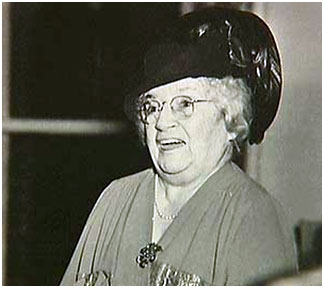
Home Structural Products & Services, Stairlifts
Structural Products & Services, Stairlifts
Furniture, Clocks,
Accessories
Antiques, Folk Art,
Fine Art, Auction Houses
Meet the Lady Who Saved the Mark Twin House
and the Harriet Beecher Stowe House
by Gary Knoble
Katharine Seymour Day is best known for her role in preserving the Hartford home of her Great Aunt Harriett Beecher Stowe, the Mark Twain house, and the Katherine Seymour Day house. Born to prominent Hartford aristocray on both sides of her family, she was a life long preservationist and member of many Hartford Arts organizations. She was also an avid and talented painter, although, most of her output is held in the Katherine Seymour Day collection and rarely seen by the public. |
|
|
She was born in Hartford, Connecticut on May 8, 1870 to John Calvin Day and Alice Beecher Hooker. John was born in Hartford and Alice was born in nearby Farmington. On her mother’s side, she was the grand niece of Harriet Beecher Stowe and Henry Ward Beecher. Her Great Grandfather was the Reverend Lyman Beecher of Litchfield. Her Grand Mother was the ardent suffragist Isabella Beecher Hooker Day. On her father’s side, she was descended from John Haynes, the first Colonial governor of Connecticut. Her parent’s house was located at the corner of Garden and Myrtle Streets in Hartford. Her maternal grandparents and her great aunt Harriet lived not far away in Nook Farms. As a child she often played with the daughters of Mark Twain (Samuel Clemens) when they lived in their famous Hartford home. She attended Hartford High School. When she was 17, she traveled with her parents to Europe where they lived in England, Germany and France from 1887 to 1894. While in Europe, she became interested in painting. In 1893, she was presented to Queen Victoria’s court. After returning from Europe her family leased Mark Twain’s house for two years. (Earlier, from 1871 to 1874, Twain and his family had leased the home of Day’s grandparents, John and Isabella Hooker, while his own home was being built nearby.) In 1896 Day moved to New York and studied painting with William Merritt Chase. At age 47 (one source says 52), she obtained a Master’s degree in psychology from Radcliffe College, where she had studied the psychology of color and its relation to the new painting techniques. At age 67 she obtained a Master’s degree in history from Trinity University. In 1905 she and her friend, Mrs. Emil Ford Skeel, the grand daughter of Noah Webster, took an around the world tour encompassing Japan, China, India, the Near East, and Europe. When the Hartford house of her Great Aunt, Harriet Beecher Stowe, became available in 1924, she bought it. She returned to Hartford in 1927 to live in the house. The same year, she learned of plans to demolish the neighboring Twain house and replace it with a car dealership or apartment house. She quickly organized a group called The Friends of Hartford and, in the face of local opposition, managed to raise $100,000 which was used to buy the Twain house in 1929. In 1937 she formed a foundation known as the Stowe, Beecher, Hooker, Seymour, Day memorial Library and Historical Foundation, which oversaw the maintenance of the houses and the development of a visitor center and library. In 1940 she bought another neighboring house now known as the Katharine Seymour Day House, which she used primarily for meetings of the various organizations she supported. She served on various preservation committees and commissions including the Hartford City Planning Commission and the Twain Memorial Commission, a position she held until her death. She was a member of the Colonial Dames and the D.A.R. as well as several other organizations. Her interest in painting never stopped. She painted throughout her life and often showed her paintings locally. James Britton, a Hartford painter and art critic, noted in his diary on October 3, 1933, “She (Elizabeth Stevens - dates unknown, she was approximately 60 in 1933), and Mrs. Talcott (Sarah Whiting Talcott, 1852-1936), and Miss Day are three painters of whom Hartford should be proud.” Most of Day’s paintings are held in the Foundation’s collection and are housed in the Katharine Seymour Day house. Day never married. Katharine Seymour Day died on June 4, 1964 in Hartford and is buried in the Cedar Hill Cemetery with her family. In 1994, she was inducted into the Connecticut Women’s Hall of Fame. |
||




